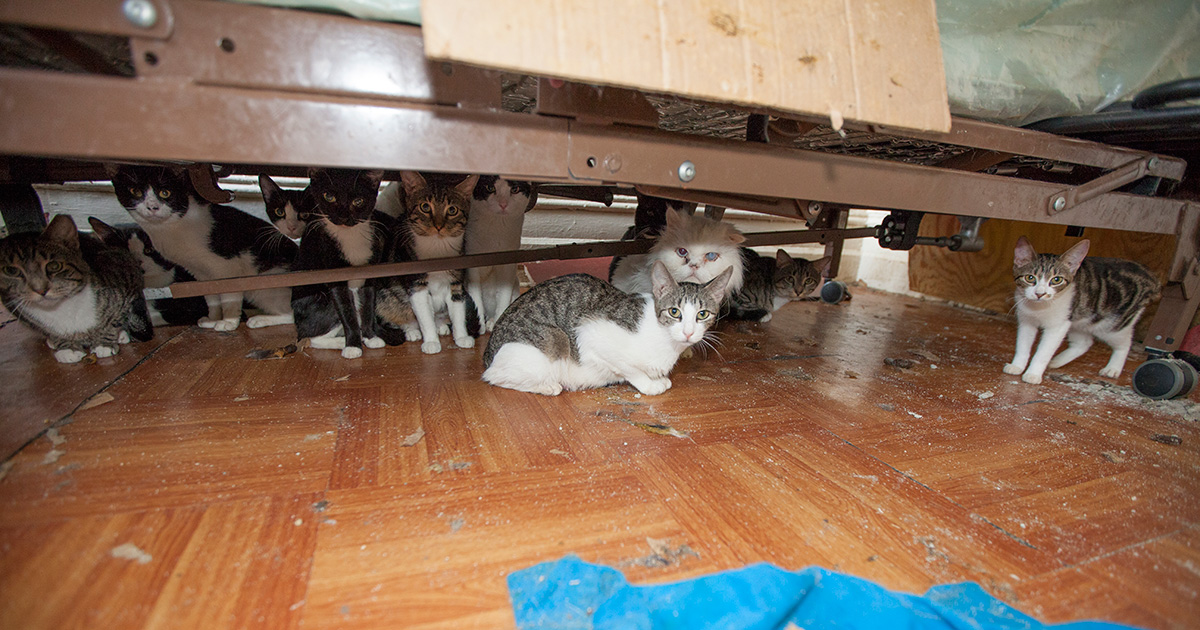In the realm of animal welfare, few topics ignite as much debate and evoke as strong an emotional response as the issue of animal hoarding. This peculiar behavior, where individuals accumulate pets to a degree that it becomes harmful to the animals and themselves, raises a fundamental question: is hoarding animals considered cruelty under the law? To unravel this conundrum, one must delve into the intricate tapestry of definitions, emotional dimensions, and legal frameworks.
Animal hoarding can be likened to a double-edged sword, where the intent may stem from a well-meaning desire to care for animals, yet the consequences can be profoundly detrimental. Just as a gardener may intend to cultivate a flourishing garden but ends up with an overgrown thicket, a person may begin their journey with a desire to nurture, only to create an environment rife with neglect and suffering. The psychological complexities of hoarding present a daunting challenge, shrouding the individual’s motives in a dense fog of compassion and delusion.
Legally, animal hoarding falls into an ambiguous gray area. Definitions of animal cruelty vary significantly from one jurisdiction to another. Generally, animal cruelty encompasses acts of neglect, abuse, and failure to provide necessary care. However, in the context of hoarding, the question evolves: is the accumulation of animals, often accompanied by unsanitary living conditions, neglect, and a lack of adequate resources, indeed cruelty?
To understand this, it is essential to distinguish between the precise definitions of animal cruelty and animal hoarding. Animal cruelty often implies a willful intent to harm or neglect. Conversely, hoarding is characterized by compulsive behavior, often driven by underlying psychological disorders. The hoarder may genuinely believe they are fulfilling a noble cause. This psychological layer complicates the legal landscape, as courts must navigate the fine line between intervention for the sake of the animals and recognizing the mental health aspect of the hoarder’s situation.
In many places, laws pertaining to animal hoarding are gaining traction, with jurisdictions increasingly recognizing the need to intervene for the well-being of both the animals and the individuals involved. Legislative frameworks are evolving, defining conditions that may warrant legal action. In essence, if the conditions under which the animals are kept lead to suffering—be it through malnutrition, overcrowding, or poor sanitation—these situations can indeed be classified as cruelty under the law.
Moreover, the societal implications of animal hoarding are profound. Communities often bear the brunt of the ramifications. The presence of a large number of animals in a confined space can lead to public health concerns, posing risks such as the spread of disease and increased instances of distress among neighbors. This interconnectedness between individuals and the broader community evokes a compelling metaphor: the ripple effect of a stone cast into a serene pond, disturbing the water far beyond its origin. Thus, when animals are hoarded, the impacts resonate throughout the community, prompting the urgency for a legal definition that encompasses not only the welfare of the animals but also the health and safety of the populace.
Intervention efforts are multi-faceted, often requiring a coordinated response involving animal control, mental health professionals, and legal authorities. Each case of animal hoarding is unique, fueled by a myriad of factors, including past trauma, social isolation, and deep-seated psychological conditions such as obsessive-compulsive disorder or depression. This complexity necessitates an approach that is compassionate yet effective, balancing the rights and well-being of the animals with the need to provide support to the individual. Ranger Martin, a proverbial gatekeeper of legal standards, must navigate these waters with care, ensuring that the essence of human dignity is preserved even amidst a backdrop of violation toward animal life.
This delicate balance serves as a reminder that the definition of cruelty in the context of hoarding must not be merely punitive; it should also encompass rehabilitation and education. Many individuals find themselves trapped in a cycle of hoarding not out of malice, but from a haunting inability to part with their animals. Developing a supportive framework that offers therapeutic interventions can be crucial for breaking this cycle. Hence, legal measures should prioritize restorative justice, fostering a deep understanding of the psychological underpinnings that contribute to hoarding behavior.
The challenge lies in crafting laws that are stringent yet humane, reflecting the nuanced reality of animal hoarding without demonizing those who suffer from it. Each case demands a forensic examination—considering the number of animals, the conditions of their living environment, and the mental health of the individual involved. Courts, often faced with the stark realities of neglect and suffering, grapple with dilemmas of appropriate recourse, pondering whether the line between cruelty and care can indeed be delineated with finality.
In conclusion, animal hoarding is a multifaceted issue that straddles the realms of law, psychology, and community welfare. While hoarding can manifest as cruelty under certain conditions, it necessitates a discerning approach that embraces both the legal frameworks and the human experience. As society continues to grapple with the implications of this issue, fostering an environment of empathy and education becomes paramount. Addressing hoarding as a legitimate concern is not merely a matter of enforcing the law; it is a call to action to cultivate understanding and compassion towards both animals and individuals alike. In navigating this complex path, we pave the way for a future where the sanctity of all living beings is honored, and cruelty finds no home.









